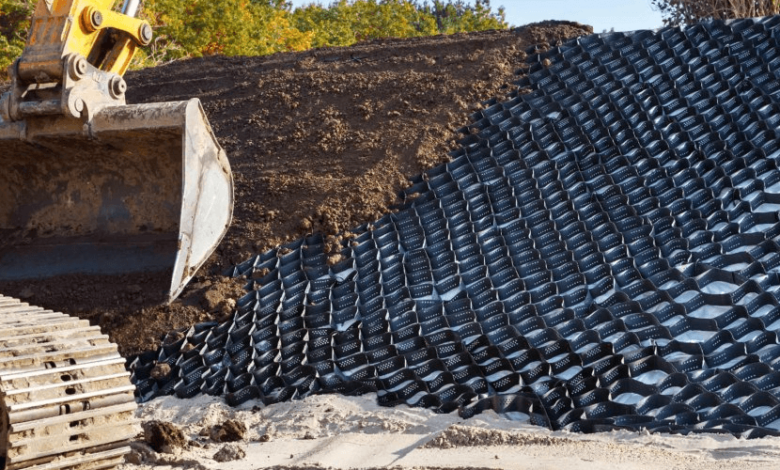Understanding Geomalla: What It Is Used For

As construction technology evolves, engineers are increasingly relying on geosynthetic materials to improve soil stability, drainage, and structural strength. One such material, geomalla, plays a crucial role in modern infrastructure projects. If you’ve ever wondered geomalla para que sirve (what is geomalla used for), this in-depth article explains everything you need to know in English while preserving the essence of the keyword.
What Is Geomalla?
Geomalla, or geogrid, is a synthetic mesh material made from polymers like polypropylene, polyester, or polyethylene. It is designed with open spaces (apertures) between the ribs to interact with soil particles. Its structure allows it to reinforce the soil and distribute loads efficiently.
Geomallas are typically manufactured in two main types: uniaxial and biaxial.
- Uniaxial geomallas provide strength in one direction and are primarily used for retaining walls and slopes.
See also: Unlocking Cash Flow Success for Small Businesses
Main Functions of Geomalla
To answer the question “geomalla para que sirve” clearly, we need to explore its primary functions in civil engineering and environmental projects.
1. Soil Reinforcement
Geomalla is extensively used to reinforce weak soils. When installed within or over soft soil layers, it provides tensile strength, which the soil lacks. This reinforcement helps prevent structural collapse, settlement, and instability.
2. Load Distribution
In road construction, geomallas are placed beneath pavements or gravel bases. They help distribute the load of traffic across a wider area, preventing rutting and prolonging road life.
3. Retaining Wall Support
For gravity walls or mechanically stabilized earth (MSE) walls, geomallas act as horizontal layers that bind the soil backfill. This adds strength and prevents the wall from shifting or collapsing.
4. Slope Stabilization
Steep slopes and embankments are at risk of erosion and sliding.
5. Rail and Airport Support
In railways and airports, geomallas are used beneath ballast layers to prevent deformation. They ensure smoother operations by maintaining a firm, flat surface.
Applications in Infrastructure Projects
Geomalla is a versatile solution for both public and private sector projects
Roads and Highways
Poor subgrades can lead to pavement failures. Geomallas are installed beneath the sub-base to enhance structural integrity and minimize maintenance costs.
Retaining Structures
They are often used with modular blocks, concrete panels, or wrapped face systems to retain soil safely and economically.
Landfills
In landfill systems, geomallas provide structural support to berms and containment zones. They work alongside geomembranes and geotextiles to manage pressure and movement.
Parking Lots and Driveways
In commercial and residential developments, geomallas ensure durability and strength under constant vehicle load.
Mining and Oil Platforms
Temporary or permanent roads in remote locations benefit greatly from geomalla stabilization, reducing the need for extensive earthwork.
Advantages of Using Geomalla
There are multiple technical and economic advantages to using geomalla in construction projects.
Cost-Effectiveness
By enhancing ground strength, geomallas can reduce the thickness of required base layers, saving on materials and labor.
Easy Installation
Geomallas are lightweight, easy to transport, and can be cut to size on-site. This speeds up the construction process.
Environmental Sustainability
Using geomallas can reduce the need for quarrying new materials or transporting gravel over long distances, thus lowering the carbon footprint of a project.
Choosing the Right Geomalla
Selecting the correct type of geomalla is critical to project success. Here are a few factors to consider:
- Soil Conditions: For soft soils, high-strength uniaxial geomallas may be necessary.
- Application Type: Biaxial for roads; uniaxial for walls and slopes.
- Load Requirements: Evaluate live and dead loads to ensure adequate tensile strength.
- UV and Chemical Resistance: In exposed or industrial environments, geomallas with protective coatings may be required.
Always consult with a geotechnical engineer or supplier for technical specifications.
Installation Guidelines
Although geomalla is easy to install, certain steps must be followed for optimal performance.
Site Preparation
Clear vegetation and debris. Level the surface and compact the soil if needed.
Anchorage
Anchor the geomalla with pins or fill material to prevent movement during backfilling.
Backfilling
Use suitable aggregate or soil material. Compact in layers to ensure good interlock between the geomalla and soil.
Real-World Example: Geomalla in Slope Protection
In a mountainous region of Peru, frequent landslides were causing damage to rural roads. Engineers installed uniaxial geomalla in a layered system along the slope face and anchored it with geotextile filters and soil nails.
As a result, the slope became stable and vegetation regrowth was encouraged through hydroseeding. The local community reported no further erosion during the next two rainy seasons, proving the effectiveness of the geomalla-based solution.
Where to Buy Geomalla
Many suppliers offer geomalla through online platforms and construction distributors. It is important to:
- Verify certifications (ISO, ASTM, etc.)
- Request product datasheets
- Confirm shipping and handling quality
- Read customer reviews or request client references
Purchasing from reputable vendors ensures long-term performance and safety.
Conclusion
When asking the question “geomalla para que sirve”, the answer is clear: geomalla serves to reinforce soil, distribute loads, prevent erosion, and support sustainable infrastructure development. Its usage spans highways, slopes, walls, landfills, and even residential landscaping.
By understanding its benefits and correct application, engineers and builders can enhance project performance and safety. As a reliable, easy-to-install, and cost-effective material, geomalla continues to be a top choice in geotechnical engineering.




